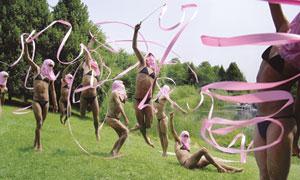Self-representation, or using the self as the site of an art practice, is often seen as self-important. But each of the nine artists in SAW Gallery’s new exhibit, Extreme Self: Art in the Radical First Person, uses the body or face, powerfully and inventively, as a way of questioning identity or selfhood.
“Having made self-portraits myself, I’ve often thought about the significance of using one’s own body to express an idea. Self-portraiture has been a genre since the early Renaissance, so it seemed like an interesting path to explore its continued relevance in contemporary art,” says SAW Gallery’s curator, Jason St-Laurent. “Bringing together artists from Canada and internationally who have pushed the limits of self-representation, in sometimes radical ways, I hope to shed light on what it means to be a thinking and feeling human being.”
Thanks to extensive federal, provincial and municipal funding, Extreme Self’s powerhouse lineup includes seminal work by New York’s Laurie Anderson, London-based duo Gilbert & George, LA’s Chris Burden and Vancouver’s Paul Wong.
Wong will be exhibiting his canonical 1976 video 60 Unit: Bruise, depicting Wong with his friend Kenneth Fletcher. In the video, Fletcher withdraws 60 units of blood from his own arm and then injects it into Wong’s shoulder.
Given our HIV-conscious community today, this intentional mixing of fluids is shocking and uncomfortable to watch. The experience feels both erotic and dangerous.
“It’s really early video — my first-ever colour video using the body,” Wong says. “It’s a work that continues to resonate and get out there.”
There’s an interesting artistic lineage in Extreme Self, in that several of the artists involved in the show count at least one of the nine exhibitors as a central creative influence.
“I love the company that I’m in,” Wong says. “Chris Burden was one of my heroes when I was starting out. Laurie Anderson has always been an amazing performance artist and sound artist . . . Suzy Lake — I used to see her work when I went to Toronto in the mid-’70s, and I thought, ‘Wow. Very interesting photographic work.’ Also, Gilbert & George. And Theo Pelmus, who I’ve gotten to know more recently in Toronto.”
Also on the roster is Montreal’s 2Fik, an emerging queer photographer whose images invoke a profound questioning of coherent, static identity. His self-portraits depict various characters or personas he invented to explore the multiplicity of identity.
“I have 10 or 11 of them,” 2Fik says. “They all have a biography and name and age. A history. So I have to respect that in order to make them evolve. I’m interested in the whole concept of immigration, integration, identity. What makes you who you are? The whole clash between what you look like and what you are as a person.”
2Fik is excited by the concept behind Extreme Self.
“Doing an exhibition on how artists use themselves and put themselves in front of the camera, but also in the back, is fascinating,” he says. “The way to use your body and the way to portray yourself in photos can be everything but narcissistic. It’s not about you as a person; it’s about using your body, your face, as a tool.”

 Why you can trust Xtra
Why you can trust Xtra


